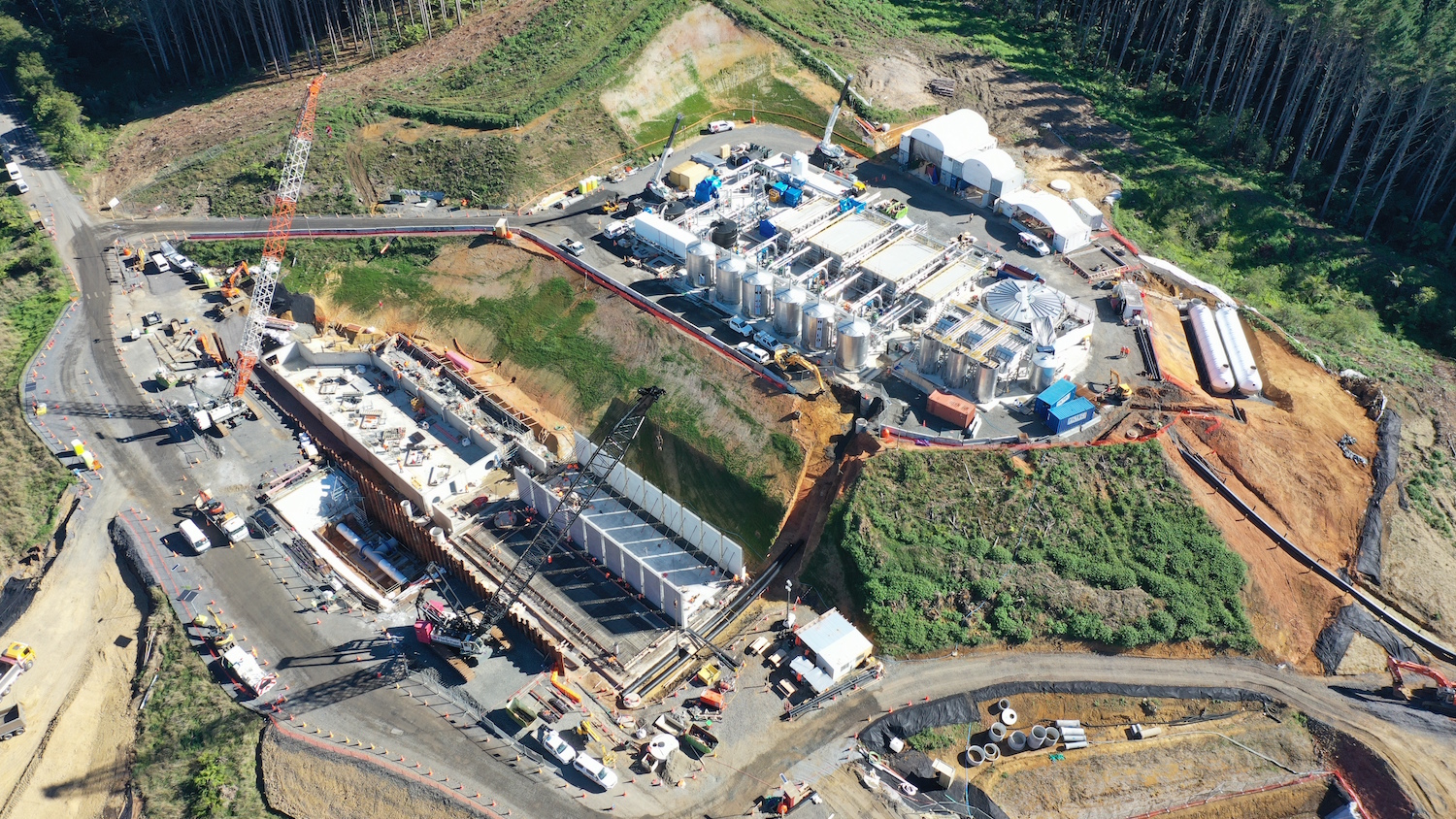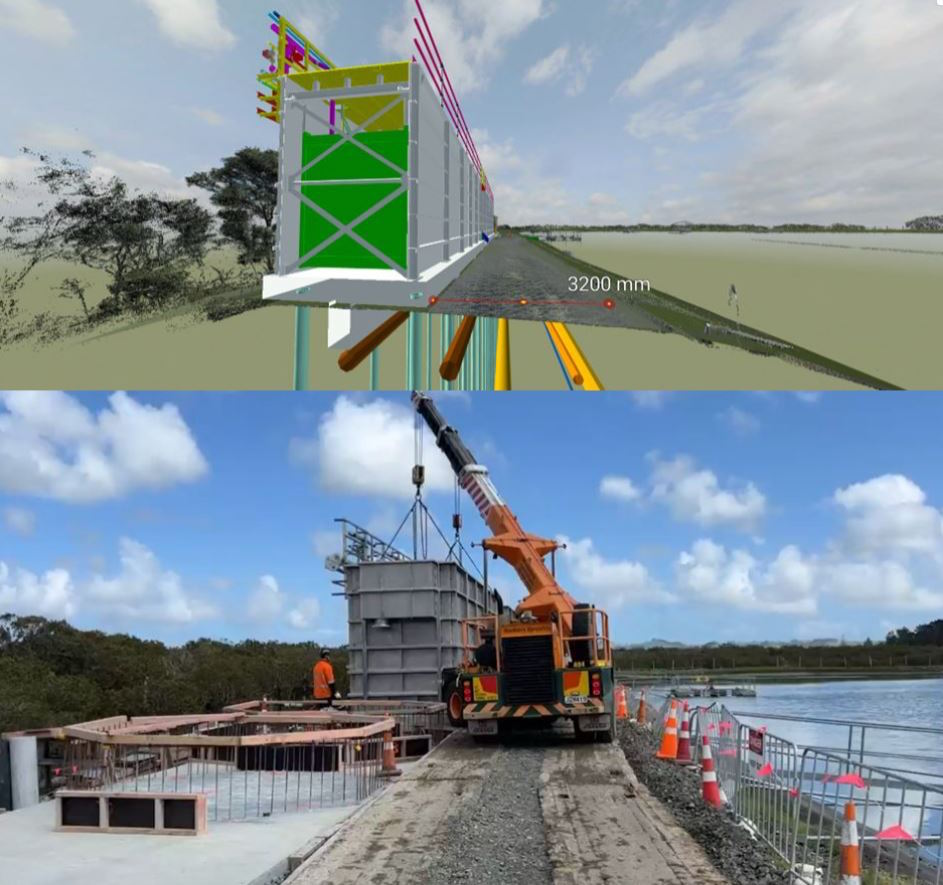
“Digital transformation isn’t about adopting new tools or platforms; the key to success lies in consistent implementation of practical solutions.” So says Steve Webster, chief infrastructure officer at Watercare Services in New Zealand.
To understand Watercare and its digital journey, we must first understand the scope of Watercare’s responsibilities and its work. Watercare is New Zealand’s largest company in the water and wastewater industry. It supplies more than 400 million litres of water to the approximately 1.6 million people of Auckland every day.
Watercare draws water from 27 sources, treats it and supplies it to homes and businesses via a vast network of pipes. It collects, treats and disposes of around 409 million litres of wastewater daily, including trade waste from industry.
Watercare also carries out significant work to upgrade and build infrastructure, so that it can maintain levels of service and provide capacity for the fast-growing Auckland population.

“Digital transformation isn’t about adopting new tools or platforms; the key to success lies in consistent implementation of practical solutions.”
Enterprise model
The Watercare Enterprise Model (EM) is a strategy and planning, design, and construction partnership to deliver a NZ$13bn (£6.16bn) programme of work for the design and construction of water and wastewater infrastructure for Auckland over 10 years.
Over the next three years, approximately 500 projects will be delivered as part of this programme, ranging in scale from NZ$1bn to NZ$100,000. At its peak the EM will require the support of up to 2,500 individuals. At this scale, it is one of the largest infrastructure programmes ever to be undertaken in New Zealand.
The EM has an ambitious 40:20:20 vision to achieve:
- a 40% reduction in carbon emissions within the construction sector;
- a 20% decrease in overall infrastructure delivery costs, starting with the initial project planning through to project closure and handover to the Watercare operations team; and
- a 20% year-on-year reduction in construction-related injuries, prioritising the safety and wellbeing of Watercare staff, consultants, contractors, subcontractors, and all individuals involved in the delivery of these infrastructure projects.
WSL realised early that for the partners to succeed in meeting these ambitious targets, the development and implementation of a robust and consistent digital engineering strategy was required. Combined with the scale of this once-in-a-generation water and wastewater infrastructure programme, the digital engineering strategy could support the collaborative delivery model already established through the creation of the EM.

The digital journey
To maximise the value of digital engineering across the EM, Watercare first needed to understand where value had already been realised through the implementation of digital engineering processes. To do this, Farzam Farzadi, senior associate, digital engineering, at Beca, was engaged to lead the implementation process.
Working in close partnership with Watecare and the EM partners, Farzadi undertook a lessons-learned exercise on a range of recently-completed projects to identify where value was extracted across all stages of the project and asset lifecycle. Once this was complete, a proposed approach to digital engineering implementation was defined.
The key first step was to develop a stable backbone of standards, templates and processes that would be implemented across all EM projects. This stable backbone, which is aligned with Watercare’s objectives and the capability and capacity of the New Zealand design and construction supply chain, included the development of:
- a master digital engineering execution plan. This document set out the approach to digital engineering implementation across the programme of work, and covered multiple asset typologies, including treatment plants, reservoirs, pipelines, transport infrastructure and buildings;
- a master model geometry specification to define how model elements are developed for each of the asset typologies noted above;
- an as-built model specification to define the extent of as-built model and survey requirements for geometry handover purposes for each of the asset typologies noted above;
- an asset data requirements schema aligned to an object classification system; and
- specific digital engineering workflows to support safety in design and hazard and operability reviews.
To date, digital engineering has been implemented on approximately 15 projects to the value of circa NZ$400m. Value is already starting to be realised, including a 50% reduction in construction RFIs, significant schedule efficiencies, and enhancements in site safety.

“To truly make a difference and add value, our focus should be on generating information that can be recycled and used throughout the lifecycle of assets.”
Realising value
To measure the success of digital engineering adoption, the EM established the value realisation implementation (VRI) that is sponsored and managed by Steve Webster, chief infrastructure officer at Watercare. The digital workstream of VRI, which focused on consistent implementation of Watercare standards, has been led by Farzadi since October 2023.
The purpose of this VRI digital workstream is to monitor the effectiveness of digital engineering adoption across the EM and report on the value that is realised. Early studies indicate that the practical implementation of digital engineering with a focus on achieving specific outcomes is likely to provide efficiency gains ranging from NZ$260m to NZ$500m (approximately 2% to 4% of the capital cost of the programme) across the EM programme of work.
This value is being realised through the implementation of a balanced information management approach that focuses on standardisation, clear information requirements that have value and purpose, streamlining processes, adopting new technologies, and investing in building capability. The outcomes of this approach have been enhancements in consistency, transparency, accountability, and knowledge-sharing across the partnership and at the programme level.
The VRI digital workstream has revealed that the consistent application of digital engineering processes, technology and resources at Watercare, coupled with mandated and monitored implementation, are the key ingredients for success. The EM recognises that success hinges not solely on digital tools or platforms, but also on the consistent and effective implementation of practical digital solutions across the portfolio, programme and project.
Understanding where costs lie and implementing solutions accordingly is a crucial step. Monitoring rework, requests for information and variations further enhances cost efficiency. Additionally, vital strategies for achieving efficiencies include: challenging industry norms and business models; minimising the production; and management of non-digital information such as documents, reports, and drawings.
The lessons
The lessons learned are:
- A successful digital transformation in infrastructure is not about digital products or tools: it’s about being able to adapt and systemise what already exists.
- A collaborative environment is required to enable a successful digital transformation at the programme level.
- The EM environment cultivates individuals who identify value, decide where to invest and then deliver.
- Proposing to use a digital tool, product or approach without the ability to demonstrate tangible value and return on investment may not be the most productive use of time or energy.
Don’t miss out on BIM and digital construction news: sign up to receive the BIMplus newsletter.
Comments
Comments are closed.














Waikato Water Treatment Plant (pictured) and Helensville Wastewater Treatment Plant (also pictured) identified in this article have both been constructed by Brian Perry Civil as part of the EM. Both of these projects have seen a progressive step change in how critical water infrastructure assets are delivered where open collaboration between client, designer and constructor is actively encouraged – leading to a legacy of digital lessons learned and refinement of digital processes that enable “the consistent implementation of practical solutions”. Digital tools are not the silver bullet – but they can be the enabler of greater value when true collaboration is encouraged. Congratulations to Farzam, Steve and the Brian Perry Civil team for their hard work on these critical projects.